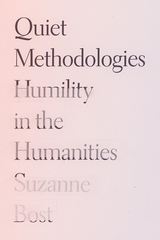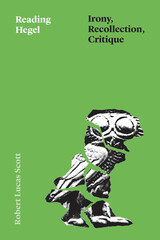


Anyone who knows children understands the importance of their relationships with one another. But until recently, psychology has offered little to illuminate children's friendships, assuming Instead that development is largely determined by the relationship between parent and child. Now, however, a new psychology of the child's social world has begun to take shape. Zick Rubin's book provides a graceful introduction to this work, written in the clear, nontechnical style that readers have come to expect of the Developing Child series.
Children's Friendships covers such questions as how friendship develops out of the simple play among young toddlers, how the child's conception of friendship changes with increasing cognitive sophistication, how individuals become popular or unpopular and how each affects them, why children form cliques, adopt stereotypes, follow fads, and (almost universally) exclude members of the opposite sex in the years just before puberty. The author's answers to these and other questions may surprise even the most experienced child-watcher.
Whether we like it or not, children learn a great deal—both cognitively and emotionally—from one another. Children's Friendships provides important insight into this kind of learning that all interested adults will find extremely valuable.


How do children learn the intangible rules of conversation? How do they make talk “work”? Adults usually regard talk as a simple means of conveying information. Catherine Garvey’s examination of children’s talk reveals, however, that much more than this goes on in any conversational exchange.
Talk always takes place in a particular situation or context: the speakers are continuously interpreting what is going on, and they adjust their responses accordingly. To be sure that the message is received, children must learn to engage the attention of the other person, to take turns at talking, and to set up signals for the beginning and end of conversation. They learn to confirm that the intended meaning is understood and to evaluate the acceptability of the message, and they acquire an understanding of the ritual aspects of talk, including marks of courtesy such as “please” and “thank you,” displays of attentiveness, and an awareness of interpersonal status. Children must also learn to say “no,” to use talk to reach a goal, and to interpret the differences in the ways other people talk.
Garvey explains the importance of talk to children’s socialization and development and shows why talk is an integral and revealing part of the child’s life that reflects important changes in thinking and social interaction.

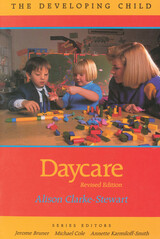
There are eight million preschoolers whose mothers now work, most of them because of economic necessity. For these mothers the question is not whether to use daycare, but how to choose among the available options in a way that is best for the child. These are just the questions taken up in Daycare, a brief and readable summary of the best information modern “baby science” has to offer about how daycare affects young children and how to tell the difference between daycare that helps and daycare that hurts.
On the basis of her own research and a complete review of the most recent daycare studies, Alison Clarke-Stewart concludes that good daycare definitely does not impair the child's development either emotionally or intellectually. Fears that daycare children will fail to develop proper parental attachments and will cling instead to their peers are unfounded; so too are fears that mental growth will be slowed. In fact, there is some evidence that social and intellectual development can be facilitated in good daycare environments. The real question is just what these environments are made of, and here Daycare provides a complete discussion of the necessary ingredients, including a checklist that parents can use to make their own evaluation of any daycare arrangement.
This is a book that covers all the practical problems daycare parents must face and suggests ways to solve them that are based not on psychological theory or political conviction but on the facts as we now know them.




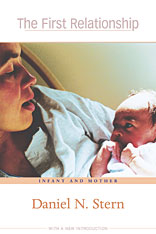
Daniel Stern's pathbreaking video-based research into the intimate complexities of mother-infant interaction has had an enormous impact on psychotherapy and developmental psychology. His minute analyses of the exchanges between mothers and babies have offered empirical support and correction for many theories of development. In the complex and instinctive choreography of "conversations," including smiles, gestures, and gazing, Stern discerned patterns of both emotional harmony and emotional incongruity that illuminate children's relationships with others in the larger world.
Now a noted authority on early development, Stern first reviewed his unique methods and observations in The First Relationship. Intended for parents as well as for therapists and researchers, it offers a lucid and nontechnical overview of the author's key ideas and encapsulates the major themes of his subsequent books.
"When I reread The First Relationship I was astonished to find in it almost all the ideas that have guided my work in the subsequent decades. At first I didn't know whether to be depressed or delighted. As I thought it over, I am encouraged by the realization that I had some basic perspective at the very beginning that was sufficiently well founded to guide twenty-five years of observation and ideas...This book makes it possible to see, or foresee, the unfolding of an intrinsic design."
--from the new introduction by Daniel Stern

Until very recently, almost all books on infancy assumed basic infant immaturity. Remarkably, as Tiffany Field shows in her survey of recent research, investigators are discovering that infants possess sophisticated perceptual skills, such as hearing, even before birth. Newborns can sense touch and motion, discriminate tastes and smells, recognize their mother's voice, and imitate facial expressions. In fact, the newborn is an active learner, looking, reaching, sucking, and grimacing from its first moments in its new environment.
Field provides a readable account of our current knowledge about infant development. She looks at the emergence of sensorimotor and cognitive skills, which play an important role in social and emotional development in the months following birth as the infant experiences the world. In a chapter with important implications for working mothers, Field reviews the literature on infants in nursery and daycare programs, countering negative assessments with studies that show an enhancement of infants' social interaction in good care settings. In the concluding chapter, she pays particular attention to infants at risk because of disease (including AIDS), maternal drug use, prematurity, or maternal depression, and describes possible intervention strategies. The bibliography provides an invaluable summary of significant primary reference papers for professional researchers, students, and parents.


The economic cost of retardation measures in the billions each year and the human cost is incalculable. However, many forms of retardation can now be prevented medically and much is now known about how to help the retarded lead more normal and satisfactory lives. In Mental Retardation, Dr. Robert Edgerton provides an extraordinarily useful and humane guide to this new knowledge in the brief and readable format that has become a trademark of the Developing Child series.
The book begins with a clear review of what is known about the causes of retardation, ranging from genetic abnormalities to prenatal infection, malnutrition in early childhood, environmental toxins (such as lead paint), and poverty. Edgerton shows how many of these problems can be avoided by genetic counseling, improved prenatal care, and the elimination of environmental hazards. But he also goes on to consider the questions that inevitably arise when prevention fails and family and society must cope with a retarded child: What is the impact of the child on the family? Is care within the family preferable to institutionalization? How can schools best educate the retarded? Is "mainstreaming" sensible? And how far can the retarded adult go towards normal patterns of work and social life within the community?
Mental Retardation makes it clear that many of the problems of retardation are caused by the misunderstanding and intolerance of a society like our own, which places extraordinary emphasis on mental ability and its measurable manifestations: school achievement and IQ. It is just this sort of intolerance and misunderstanding that this book does so much to dispel.

Video games, television, and computers are facts of life for today's children. Anxious parents and teachers, concerned with maintaining the intellectual and social richness of childhood, need to understand their effects. Are we producing a generation of passive children who can't read, who require constant visual and aural stimulation, and who prefer the company of technical instruments to friends and family?
Greenfield believes that to answer this question we should not cling to old and elitist assumptions about the value of literacy. Instead she urges that we explore the results of the new research to discover how the various media can be used to promote social growth and thinking skills. She finds that each medium can make a contribution to development, that each has strengths and weaknesses, and that the ideal childhood environment includes a multimedia approach to learning.
Current studies show us, for example, that television may indeed hinder reading ability under some circumstances. Yet it may also be used to enhance and motivate reading. Television can foster visual literacy, teaching children how to interpret close-ups, zooms, and cutting, and beyond this, how to pick up visual details, orient oneself in space, and anticipate formats and patterns of behavior. Video games teach spatial skills and inductive thinking, and classroom computers, contrary to the popular stereotype, encourage cooperative enterprise.
Timely and optimistic, Mind and Media is filled with unexpected conclusions and practical suggestions for helping our children to thrive in a technological world.



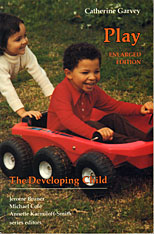

The physical process of birth is no longer as mysterious as it once was. But many unanswered psychological questions still surround the birth of a child. In this remarkably appealing and personable book, pediatrician Aidan Macfarlane takes a careful look at a large number of these important psychological unknowns.
On Macfarlane's agenda: Can a woman's emotional attitude toward pregnancy cause “morning sickness,” influence the smoothness of labor and delivery, or shape the child's behavior after birth? Can the mother-child relationship be adversely affected by separation immediately after birth? Is the quality of the birth experience improved by home delivery? What are the psychological effects of pain-killing drugs on mother and child? What, if anything, does the unborn infant see, hear, and feel inside the womb? Is birth a psychological trauma for the child and, if so, how can it be alleviated?
Although Dr. Macfarlane refuses to provide easy answers to any of these questions, his clear discussion of the available evidence is not without important consequences for the way in which we understand birth and manage it in our society.

How should we educate the children of tomorrow to solve the problems of today?
A new educational model is generating widespread interest and excitement among educators, parents, and community leaders. Known as "cognitive apprenticeship", the model draws upon contemporary cognitive and developmental science and specifies techniques for capitalizing on children's inborn ability to learn in complex natural settings. Sylvia Farnham-Diggory reports on a wide range of school programs that illustrate this innovative approach to schooling.
The new approach contrasts sharply with much current school practice, which is based on early twentieth-century theories of learning. These early theories, in misguided attempts to be "scientific", defined the acquisition of knowledge in terms of simple, quantifiable test behaviors. School practice derived from such outdated theory continues to revolve around fragmented lessons that can be easily counted and graded.
New research in cognition and human development shows that the acquisition of knowledge must be defined in terms of complex interactive networks. It cannot be acquired from workbooks or ditto sheets, nor can it be assessed through paper-and-pencil tests. Mastery of basic skills, a delight in history, literature, and science, and a creative approach to problem solving are best encouraged when children have opportunities to work alongside experts in meaningful and important contexts, thus participating in cognitive apprenticeships.
While never losing sight of her theoretical framework, Farnham-Diggory offers many practical suggestions for transforming classrooms into places of genuine intellectual growth. Schooling sets out a creative and realistic agenda for parents, teachers, school administrators, business leaders, and other concerned citizens who are looking for ways to replace traditional 1930s-style classrooms with rigorous and exciting educational environments.

The birth of a younger sibling can be a traumatic event for the older child. Unquestionably it places increased demands on parents and causes important changes in the inner balance of the family. Childrearing manuals are full of advice about how to get through this difficult time. But until now such advice has been based more on clinical guesswork than on direct observation of what really happens to families when a sibling is born.
With the arrival of Siblings, this gap in our knowledge is admirably filled. Judy Dunn and Carol Kendrick studied forty families for a period of approximately one year starting shortly before the birth of a second child. Some families, they found, weather the storm much better than others, and their book examines the full catalog of factors that can make the difference. There are, for instance, parenting styles that ease the impact on the older child, improve relations between siblings, and generally make life easier for the entire family. But there are also differences among children in such characteristics as sex, age, and temperament, all of which have a major influence totally beyond parental control.
Despite the undeniable stress involved, Dunn and Kendrick demonstrate that the advent of a sibling can be a stimulus for real cognitive and emotional growth on the part of the older child. No longer "the baby," the child must try to deal with a newcomer whose attempts to communicate are necessarily rudimentary. Siblings shows how the elder child's efforts to understand the baby can form the basis for a loving bond of extraordinary durability.
A sensitive and informative book, Siblings takes psychology into an area of family life and child development that has long received too little attention.

The sibling relationship, as any parent with two or more children knows, is an extraordinarily intense one: young brothers and sisters love and hate, play and fight, tease and mock each other with a devastating lack of inhibition.
Why do some siblings get along harmoniously and affectionately, while others constantly squabble? To what extent are parents responsible for differences in siblings' personalities, and how can they ease the tensions?
In this timely and unusual glimpse into the world of the child, Judy Dunn argues that in fighting, bullying, or comforting, very young sisters and brothers possess a far deeper understanding of others than psychologists have supposed. She challenges the usual assumptions that birth order, age gap, and gender are the most crucial factors in explaining dramatic differences between siblings within a family, and suggests that siblings themselves have an important influence on each other's development. She shows that by studying children with their brothers and sisters, rather than in unfamiliar situations, we gain a new and illuminating picture of how growing up with siblings affects children's personalities, their intelligence, their ways of thinking and talking, and their perceptions of themselves, their families, and their friends.
Full of practical advice for coping with the daily trials of parenting two or more children, this warm and accessible book, based on new research, gives a fresh perception of a relationship which for many people lasts longer than any other in life.
READERS
Browse our collection.
PUBLISHERS
See BiblioVault's publisher services.
STUDENT SERVICES
Files for college accessibility offices.
UChicago Accessibility Resources
home | accessibility | search | about | contact us
BiblioVault ® 2001 - 2025
The University of Chicago Press


